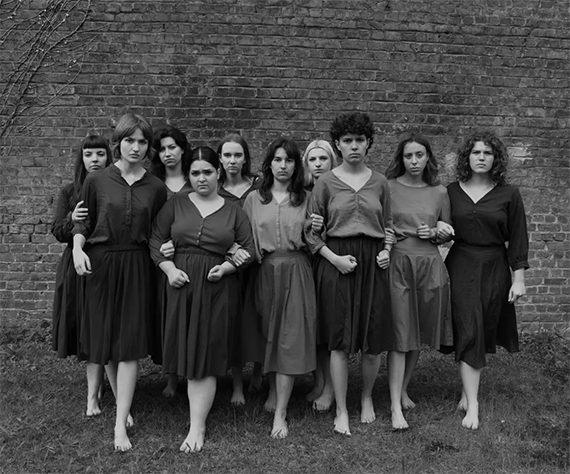
The Column, 2024.
Courtesy of the artist / ADAGP, Paris
Agnès Geoffray »
they stray they persist they thunder
Festival: 7 Jul – 21 Sep 2025
Commanderie Sainte-Luce
8 Rue du Grand Prieuré
13200 Arles

Les Rencontres de la Photographie
34, rue du Docteur Fanton
13200 Arles
+33 (0)4-90967606
The exhibition they stray they persist they thunder presents a hitherto unseen collection of photographic and textual works by Agnès Geoffray. They were conceived in the context of research carried out with Vanessa Desclaux, with the support of the bursary of the Institut pour la photographie, on the institutional archives of the "preservation schools" of Cadillac, Doullens and Clermont de l’Oise. These were public institutions for the placement of underage girls in France from the end of the 19th century to the middle of the 20th century. Agnès Geoffray and Vanessa Desclaux examined the experiences of young girls described as "deviant" or "uneducable" who were imprisoned for several years for behavior that deviated from the social and moral norms of their gender.
The exhibition explores the forms of their revolts and the expression of their aspirations for emancipation by presenting Agnès Geoffray’s works alongside a selection of historical documents—photographs, press articles, administrative records.
Agnès Geoffray’s photographs stage gestures of resistance, defense, uprising, flight or escape. They are fictional portraits of female figures who confront the violence of confinement or, on the contrary, resist it by fleeing. Excerpts of text are projected onto the surface of certain images, allowing the written, shouted or sung words borrowed from different sources or invented by the artist. In the exhibition, writing embodies an emancipatory function. It empowers the girls to assert their own subjectivity, to reclaim their words and make their voices heard.
The exhibition echoes a historical period based on a society and institutions that subsequently underwent changes. It invites us to rethink today, in a poetic and political way, the marginalized existence of these young girls, whose bodies were subjected to the sanitary, moral, medical and educational control of a prison regime that refused to speak its name.